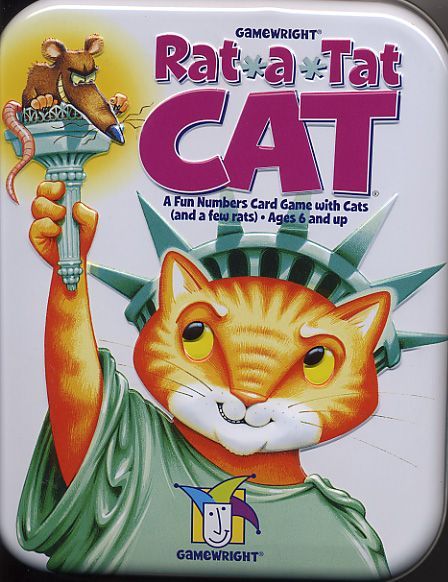Rat-a-Tat Cat (1995) Board Game
Rat-a-Tat Cat is a card game designed by Monty Stambler and Ann Stambler and published by Gamewright in in 1995. The game is targeted towards children aged 6 and above and combines elements of memory, open drafting, push your luck, and take that mechanics. The game features colorful artwork by artists Chris Van Dusen, Björn Pertoft, Roni Shepherd, and Markus Wagner.
Game Components of Rat-a-Tat Cat
How To Setup Rat-a-Tat Cat
To set up the game, each player is dealt four cards that are placed face down in a row in front of them. Before the first turn, each player looks at the two outermost cards in their row. The remaining cards form a draw pile, and the top card is turned over to start the discard pile. If the top card is an action card, it is shuffled back into the draw pile and a replacement is dealt.
Gameplay Mechanics and Game Objective
Game Objective
Gameplay Mechanics
Player Experience
Rat-a-Tat Cat is a delightful and easy-to-learn game that is perfect for family game nights. It enhances memory and strategic thinking among younger players while providing a fun and competitive atmosphere for adults as well. The game is simple enough for children as young as six to understand but still engaging for adults due to its combination of luck and strategy.
Pros
Cons
Personal Thoughts on Rat-a-Tat Cat
Rat-a-Tat Cat is highly recommended for families with young children due to its educational value and engaging gameplay. It teaches important skills such as memory, strategy, and probability while maintaining a fun and competitive atmosphere. For adults, it serves as a great filler game that is easy to pick up and play, even if it lacks the complexity desired by some gamers. Overall, it is a versatile and enjoyable game suitable for players of all ages.
We are supported by our audience. When you purchase through links on our site, we may earn an affiliate commission, at no extra cost for you. Learn more.

